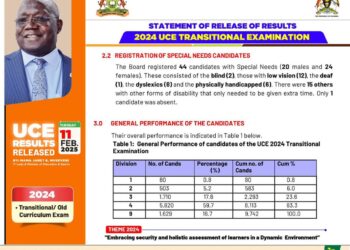Busoga from the beginning was one of the main colonial towns that everyone looked at in terms of development and industries but as governments kept changing, a few things also kept changing and now is the time that the Basoga themselves come up with an agenda to revive what existed years ago.
As we celebrate this year’s 8th Kyabazinga Coronation at the Kingdom Headquarters in Bugembe, Jinja, I will just emphasize what the Busoga consortium has been saying for the last three years and that is the Busoga Development agenda, which is a strategy that we all think will make this region better than how it is of recent.
Some years ago, Busoga kingdom came up with a strategic plan to revive Busoga and at the same point of time the Busoga Consortium was formed with a development agenda which was premised on 10 pillars which include; commercialising agriculture; tourism culture and heritage; education and skills development; development of road and water infrastructure; environmental stability; industrialisation and private sector development; health improvement; land and mineral resources development; urban and human settlement and Obwa Kyabazinga Bwa Busoga.
According to the Busoga Consortium secretariat, Busoga Development Agenda is a sub-regional development framework proposed by the Busoga Consortium for Development outlining the necessary policy and programmatic interventions to drive the socio-economic and political prosperity of the sub-region. The Busoga Consortium for Development (BCD) is commonly referred to herein as “Busoga Consortium”.
The BDA’s point of departure is a reformulation of the sub-region’s underlying development problem, consensually agreed on as ‘a disunited leadership that has failed to lead efforts towards harnessing the sub-region’s natural resource endowments and development potentials’.
Through the Busoga Consortium, leadership in its diversity from the sub-region including, inter alia, government structures, the Obwa Kyabazinga (OBB), politics, faith-based institutions, the business community as well as the people of Busoga have recommitted to galvanizing their collective social capital, political weight, financial prowess and energies to adopt the BDA as a consensual framework for its collective use to drive the revival of the sub-region’s economic fortunes.
The vision of the Busoga Consortium is a ‘social and economically transformed Busoga’. The realization of this vision is strengthened by a recommitment of all stakeholders in the sub-region to promote the principle of collectiveness towards harnessing the natural resource endowments and economic development fundamentals.
Underpinning this recommitment is an acknowledgement that Busoga’s political and cultural heritage as well as social unity are sources of enrichment for humankind and make an important contribution to the sustainable economic development of the inhabitants of Busoga, empowering them to play an active and unique role in the development initiatives within the sub-region.
There is a lot more that Busoga as a sub region needs to be revived and a few highlights have been always presented to government which include;
Government, through the Ministry of Agriculture, Animal Industry and Fisheries, has approved a five-year ‘Revolutionizing Livestock Farming project to be implemented in the Greater Busoga’ worth UGX 161.2 billion (USD 43.3 million). The project goal is to increase the production and productivity of small-scale farmers in the greater Busoga sub region through revitalization of the Kasolwe Stock Ranch to serve as a center of excellence for livestock breeding and production.
Revolutionizing and transforming agriculture in the sub-region requires a paradigm shift from a peasantry and subsistence-based model to mechanization and value addition. The Busoga Consortium will drive the mechanization of agriculture through the provision of powered machinery, particularly tractors that have accessories, including planters and harvesters. A total of 96 tractors, one for each of the 96 sub-counties, shall be provided to existing cooperative groups engaged in the growing of marketable cash crops and with the capability to add value to the produce.
According to the Uganda Tourism Board (UTB), a total of 1.7 million tourists arrived in the country in 2018, with 54 per cent of them attracted to Kampala, followed by Jinja, at 2436 per cent. The Civil Aviation (CAA) Master Plan indicates that a total of 6.6 million visitors will be arriving in Uganda by 2033. CAA further notes that ‘each airport in Uganda impacts the overall operational capacity and efficiency of the country’s aviation system.
As Jinja is host to 24 per cent of the country’s tourists, its road infrastructure requires upgrading to improve the mobility and security of tourists and the people of Busoga. We, therefore, seek to upgrade and transformation of Kiira Road (0.65 km), Nile Crescent Road (1.2 km) and Engineer Dhikusooka Way (1.4 km) into a ring road network for Jinja. The three roads are in close proximity to the Source of the Nile and have 75 per cent of the hotels that serve the town.
In partnership with current undertakings such as the Busoga Tourism Initiative, the Busoga Consortium will establish and strengthen partnerships with Government and private sector players to popularize and develop existing tourist attractions such as the Kagulu Rock Climbing Challenge, and the Bishop Hannington Memorial Site in Kyando, Mayuge District. In addition, the potential for tourism on and around the water bodies will be explored and supported.
Industrialization offers greater prospects for ‘increased employment, more export earnings, wider tax base, increased purchasing power, increased integration with agriculture, product diversification, greater efficiency, and technical skills for modernization and higher productivity throughout the whole economy’.39Jinja already has two established industrial zones, including the old industrial complex in Central Division and Jinja Industrial and Business Park with an acreage of 182.
Land measuring 600 acres has been identified at Kasolwe Ranch in Kamuli and earmarked for the establishment of an industrial park. Another piece of land measuring 530 acres has been identified at Butende in Iganga District for the construction of an industrial park and acquisition plans are underway.
The Busoga Consortium, in partnership with UNRA, the Ministry of Agriculture, Animal Husbandry and Fisheries and partners, shall ensure the development of the fishing and water transport sector in the sub-region through the upgrading of Masese Landing Site into a modern fish harbour and water transport hub. Masese Fish Harbour will be an all-weather facility with the capability to hold all types of water vessels.
The Consortium shall support OBB’s campaign for the return of the institution’s properties currently under the Central Government. Intertwined into this campaign is the advocacy for the Central Government’s appreciation of the centrality of OBB to mobilizing and steering local economic development using culture as a rallying factor. Some of the properties currently under Central Government management and usage include sub-county headquarters, markets, fishing and landing sites, and forests, among others.
So, as Busoga, we need all these to be considered on the government agenda, for Busoga to shine again and on this 8th Coronation ceremony of the Kyabazinga, we wish him good health and more life to reign on the throne and also ask the Government to endorse the Busoga agenda with all the support it needs.
Michael Woira
Patriotic Uganda
Born of Busoga
Do you have a story in your community or an opinion to share with us: Email us at editorial@watchdoguganda.com












